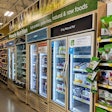
Amid the significant havoc created by COVID-19, supply chain disruptions and shortages have been an issue for many industries, including pet food. These are likely to continue throughout 2021 and into the first part of 2022, said Steve King, president and CEO of the American Pet Products Association.
Reasons for the spot shortages of pet food and other pet products began with increased and changing consumer demand, starting with the pandemic-driven spike in sales in March 2020 as pet owners stocked up. That was followed by an inevitable decline, but then sales rebounded later in 2020 as owners replenished food and supplies and as more people added pets to their households.
The ongoing shift of pet food sales to e-commerce also has played a role, because that affects the supply chain and timing. Initially, domestic product manufacturers had difficulty increasing or shifting production quickly enough, according to King. They also had to change worker safety protocols and schedule around missing workers due to illness or quarantining. In addition, they faced employee shortages amid increased competition from rapidly growing companies like Amazon, a challenge that persists in 2021.
Spot shortages of raw materials, including pet food ingredients and aluminum cans for wet pet food, arose and continue. These shortages have increased costs and delays; the National Association of Manufacturers (NAM) reported that raw materials costs rose at the swiftest rates since 2008, and the backlog of orders is the largest since 2004, King said. The higher costs are likely to be passed on to retailers and, ultimately, consumers.
Demand surges have occurred around the world, leading to a shortage of imported products and raw materials. Factors involved in international shipping have exacerbated the situation, including shortages of ground transportation equipment, fewer ships and containers available, soaring prices for containers and logjams at U.S. West Coast ports, resulting in significant delays in loading products onto trucks, with lead times to retailers doubling.
Expect disruptions, increased costs to persist
Inflation in the freight sector will continue, as will higher costs, through summer 2021, King said, though he expects some easing in the fourth quarter. “The bottom line on production is that fill rates have been dramatically impacted and are not likely to improve in the short term.” That means most manufacturers are able to fill only about 70% to 75% of the orders they’re receiving.



















